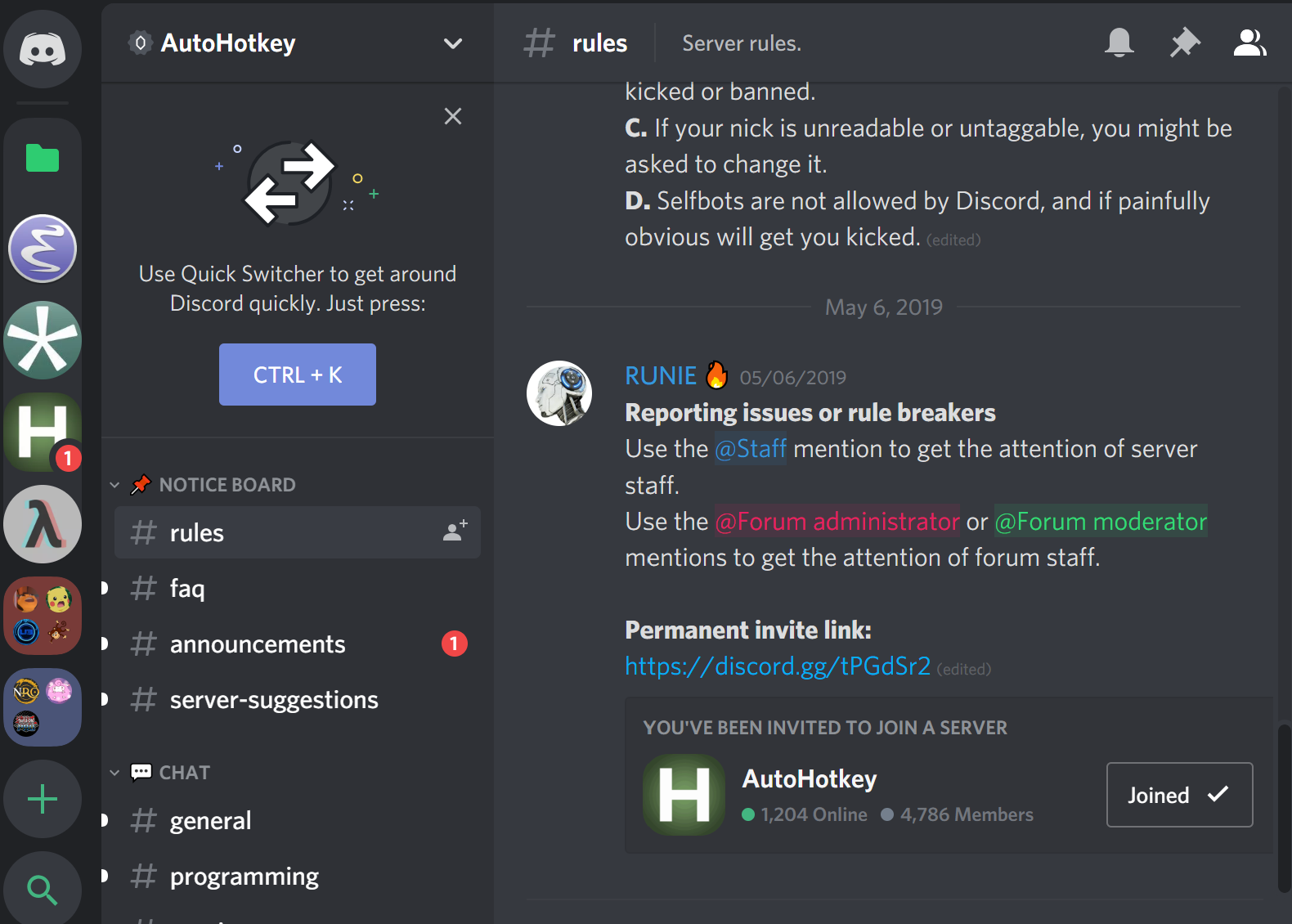
The basic modifier prefixes are exemplified in table 1, where you can see that the modifier position on the keyboard (left or right to the spacebar) is indicated by the “ ” key, respectively. When using modifiers (Ctrl, Shift, etc) it’s best to use their key prefix rather than the name. The full list of key names and prefixes can be found here. The Trigger can be a single key or a combination of keys. The syntax for a Hotkey is: Trigger::Target Now that everything is set up and working, let’s move on to basic usage. The TrayTip command is great to test new code and especially to debug more advanced functionalities.


Now press Ctrl and j on your keyboard and a notification will be triggered. Save the script, then double-click it (or right-click and select Run Script). To make sure everything is working properly, right-click the script and select Edit Script or Open with and select your text editor of choice (a list of editors with AutoHotkey syntax highlighting can be found here) and add the following code: Ctrl+j -> Trigger a windows notification To do this, right-click on an empty space in the folder where you want the script to be, select New then AutoHotkey Script and give it a name. After the installation, you need to create a script. Parts Requiredīy itself, AutoHotkey does nothing. It is also excellently documented, and with so much functionality that falls out of the scope of this tutorial, it’s not hard to get into the more advanced stuff. This is where AutoHotkey comes in, allowing you to customize hotkeys, create macros and launch programs (and so much more) with any kind of keyboard.ĪutoHotkey is a free and open-source custom scripting language for Windows, easy to learn, and utilizes almost no resources on a computer.
These allow you to save time on repetitive tasks and complicated shortcuts but can fall short on expectations by having limited functionality, besides the fact that they are usually quite expensive.

Nowadays, one big selling point of keyboards is “on the fly macros” and reconfigurable keys. This tutorial is meant to be an introduction to AutoHotkey by exploring its most popular use: hotkeys.


 0 kommentar(er)
0 kommentar(er)
